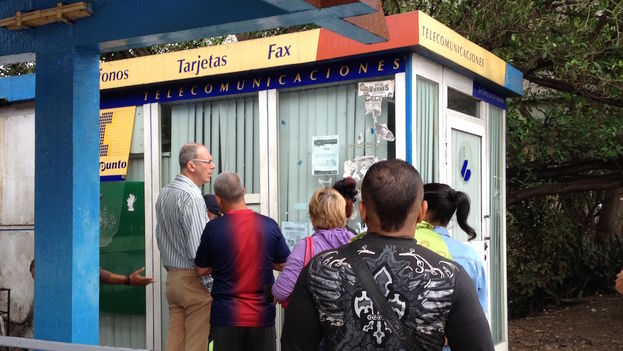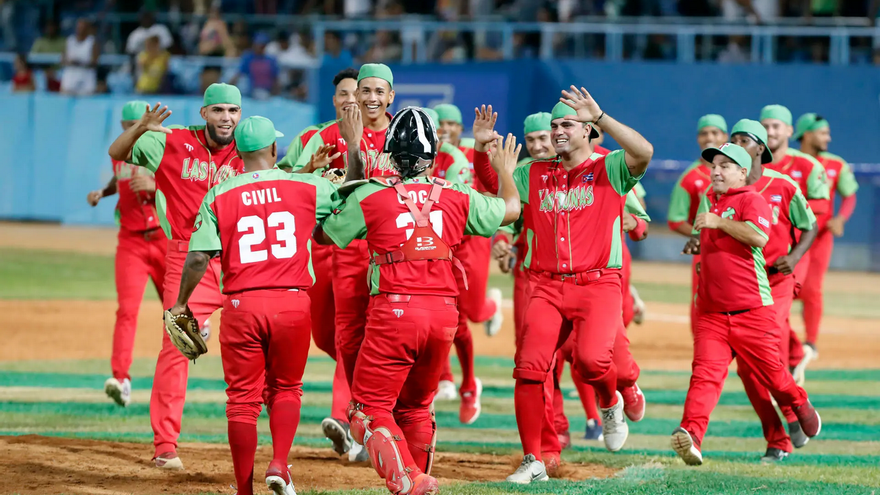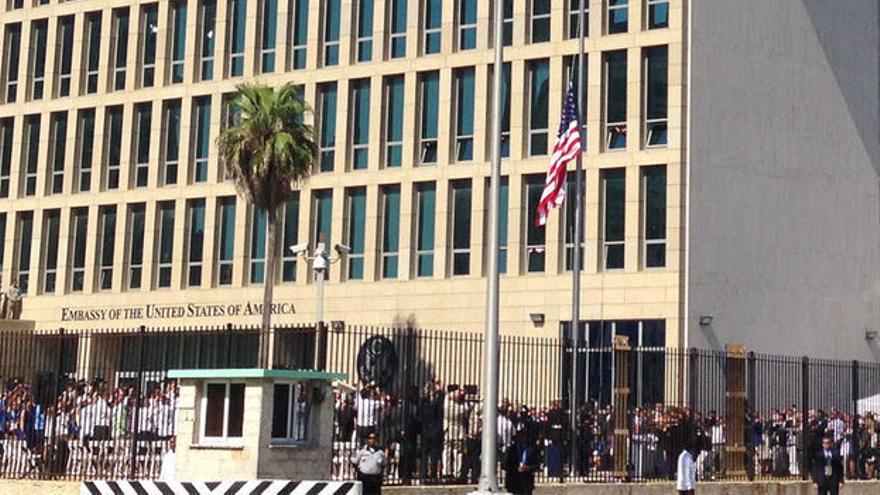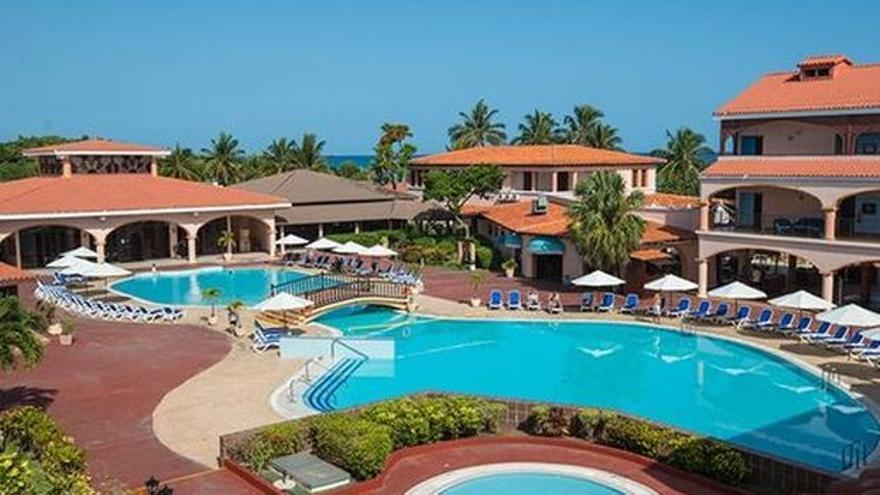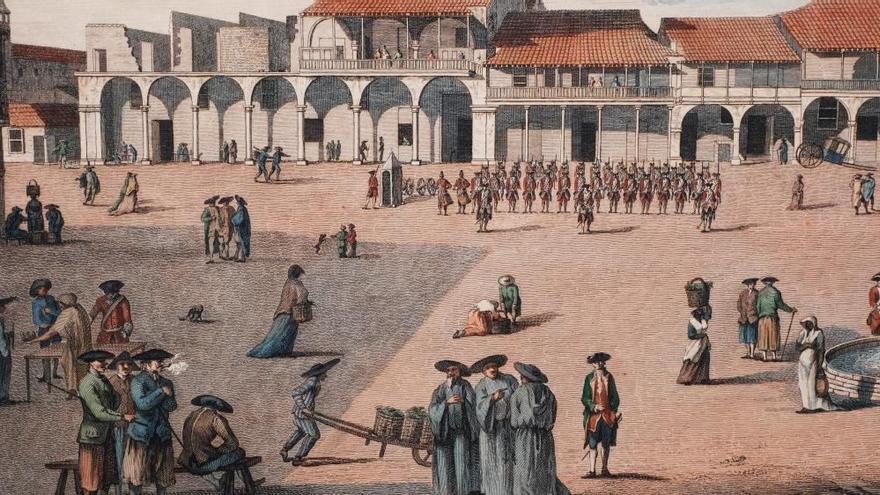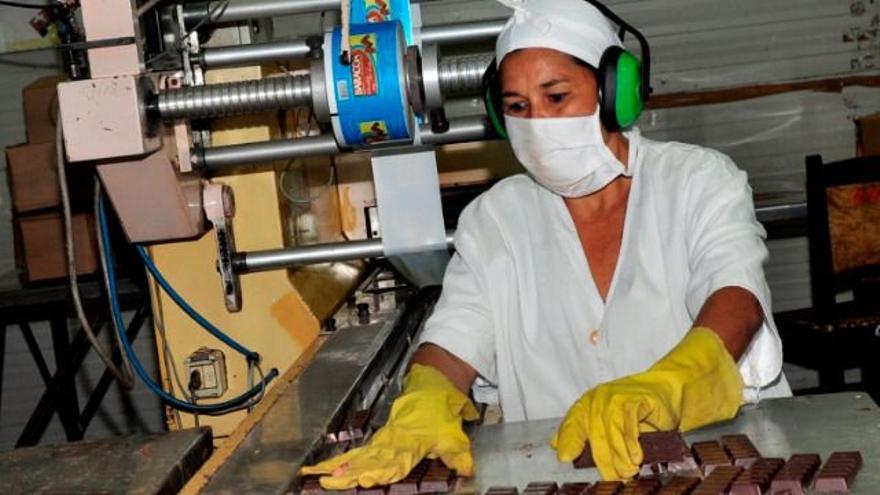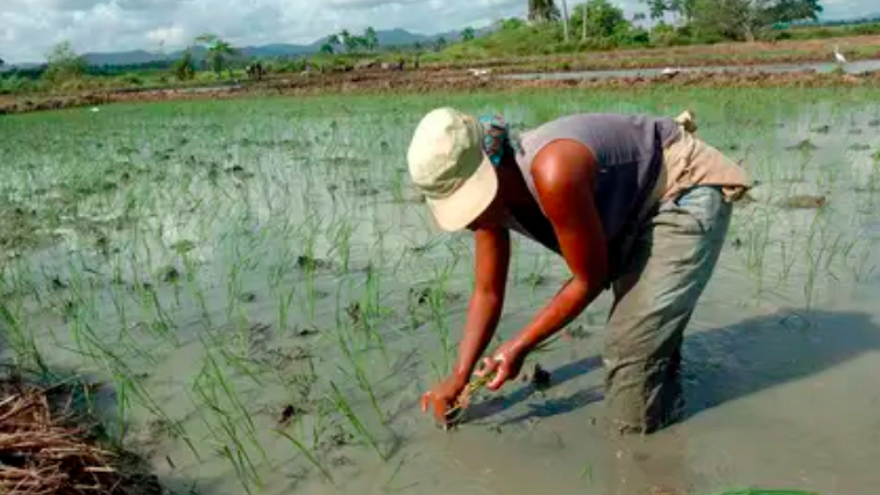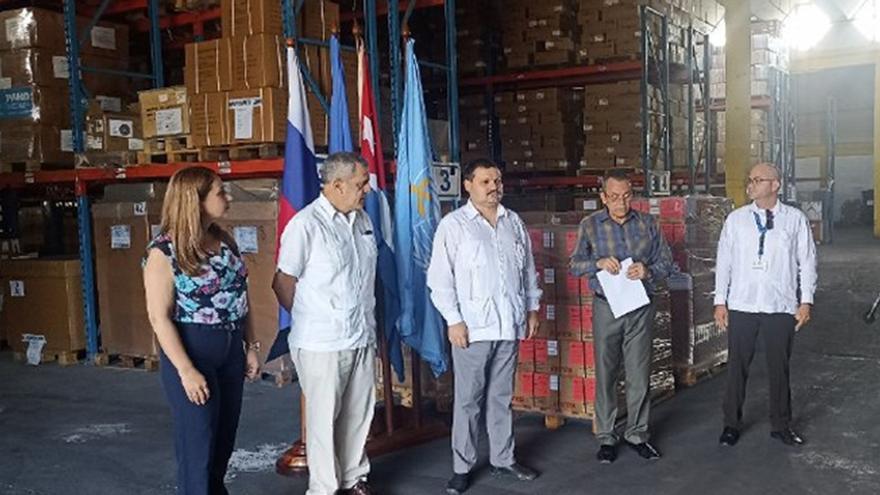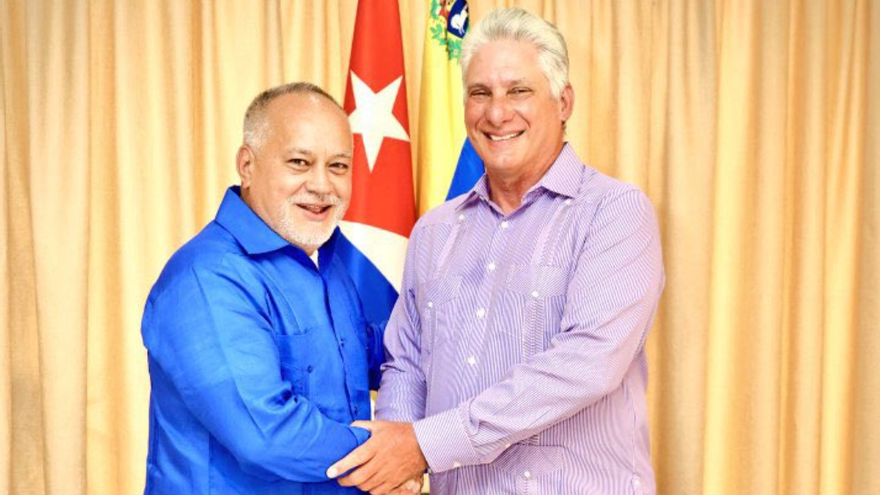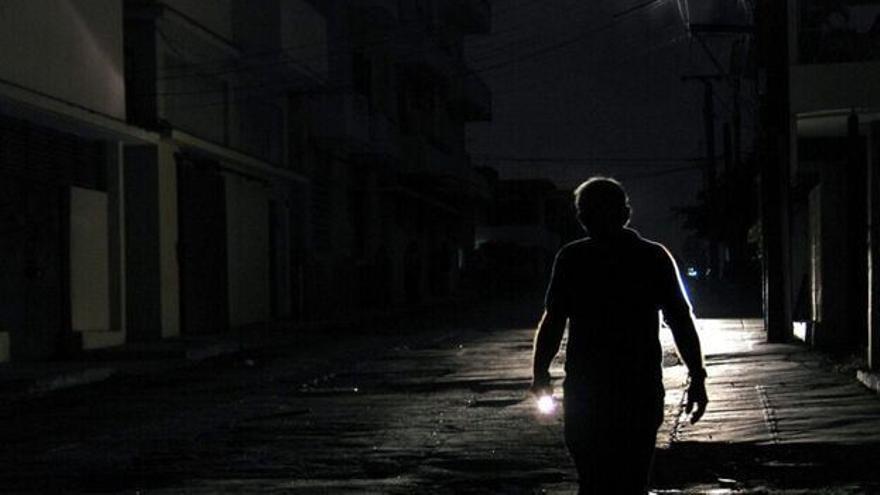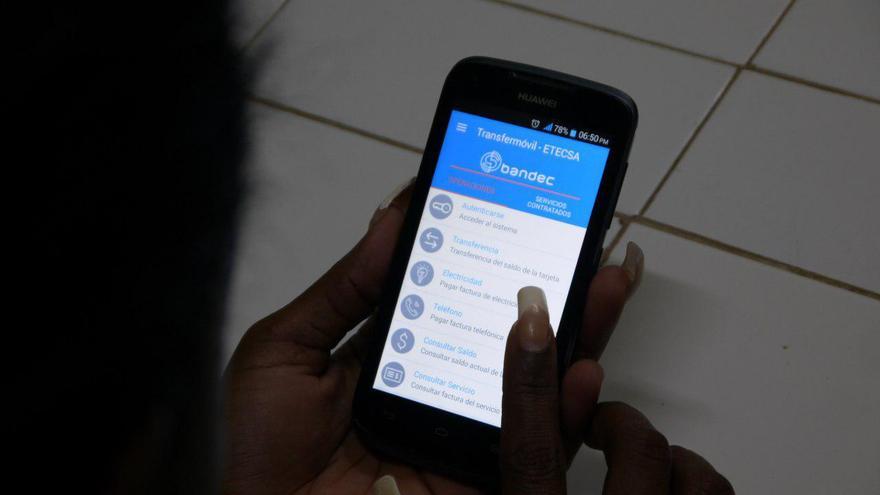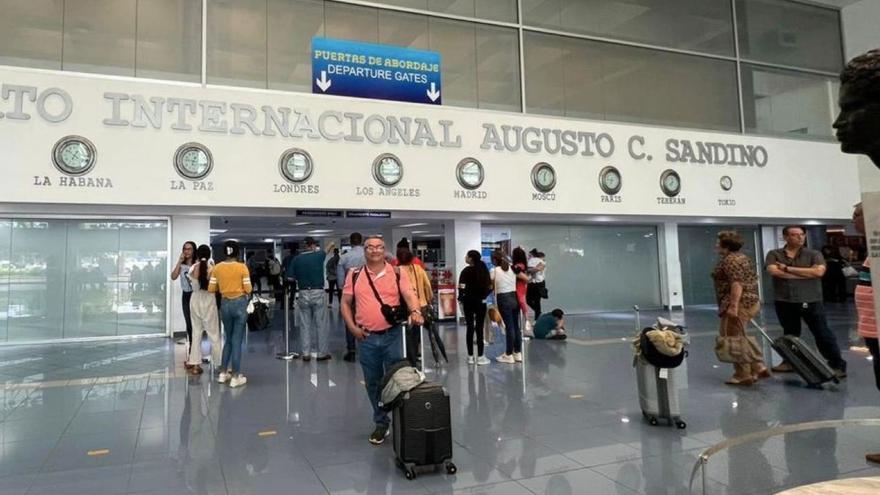
![]() 14ymedio, Havana, 17 August 2023 — The frequency of flights between several air terminals in Cuba and Nicaragua has increased significantly this summer, according to information collected by 14ymedio at the Augusto César Sandino airport, in Managua. With the closure of the U.S. border since December 2022 and the entry into force of the humanitarian parole program, the migratory flow along the Central American route decreased considerably, but that has not prevented Cubans from continuing to take advantage of the free visa to Nicaragua.
14ymedio, Havana, 17 August 2023 — The frequency of flights between several air terminals in Cuba and Nicaragua has increased significantly this summer, according to information collected by 14ymedio at the Augusto César Sandino airport, in Managua. With the closure of the U.S. border since December 2022 and the entry into force of the humanitarian parole program, the migratory flow along the Central American route decreased considerably, but that has not prevented Cubans from continuing to take advantage of the free visa to Nicaragua.
“There are up to nine daily flights arriving from Cuba,” says Julio, who has been attentive in recent years to the movements of migrants from the island. The staff of the Managua airport, who got used to the exodus of 2022, is surprised by the number of Cubans who arrive in the Nicaraguan capital every day. “If it continues like this, in two or three years the Island will have lost a million more inhabitants,” he adds.
On Thursday morning, the electronic board of arrivals from Managua airport indicated the entry of four flights from the Island, of which three originated from Havana and the last from Cancun, a city that serves as a stopover for some connections. “All charter flights come from Cuba and stop in a dozen cities, including Mérida and Cancún, in Mexico, but also in Port-au-Prince (Haiti),” says Julio.
This newspaper compared the frequencies of the route from Cuba to Managua – as announced by the Island’s airports – and noted an increase in flights on several airlines. In the case of the José Martí International Airport, in Havana, the flights of the Venezuelan Conviasa went from three weekly frequencies in July to six this August. continue reading
Another striking case is that of the Mexican airline Viva Aerobus. From Havana, the company increased its frequency with a stopover in Mérida from two weekly flights in July to seven in August, in addition to the 10 weekly routes it makes directly to Cancun. Although it is difficult to determine how many of these planes continue their journey to Managua, it is known that this airline organizes most of the flights that are made to the Central American country.
In addition, its operations are not restricted to the capital, but cover other routes, with three weekly flights to Abel Santamaría Airport, in Santa Clara, three to Ignacio Agramonte, in Camagüey, and two more to Frank País, in Holguín. Last June, these routes from the interior of the country were limited to just one weekly flight per airport.
The Dominican airline Air Century will also begin flying this August from Holguín to Nicaragua with two weekly flights, making a stopover in Santo Domingo. However, like the rest of the companies that carry out this route, it is possible that they will not declare Managua as their final destination. This is what the 14ymedio source in Nicaragua supposes: “The planes that say Dominican Republic on the airport board usually come from Santo Domingo but they can also be from Santiago de los Caballeros or Puerto Plata, because I have seen them,” he says.
Aruba Airlines and Aeromexico also fly to Nicaragua, with variable frequencies. Aeromexico makes a stopover in Mexico City.
Many of these companies do not offer their flights from Cuba to Nicaragua on their official booking pages, and in some cases, for those who intend to fly from the Island, the Managua destination does not even exist. This type of management has opened a gap for ticket resellers and several travel agencies to profit from flights between the two countries.
Currently, if a person wants to fly to Nicaragua, it is necessary to pay reservation agencies such as the Mexican Vagamundo from abroad. For residents of the Island who do not have this option, they can deal with resellers, who offer prices that in all cases exceed $1,000 per person – except for some tickets for children – and who have, at the moment, all flights covered until the end of October, according to several groups of migrants on WhatsApp and Facebook.
Ultimately, those who cannot afford what is offered by agencies or illegal merchants – who only accept transfers in dollars to U.S. banks or through Western Union for payments in Cuba – have to wait in long lines at Conviasa’s Havana offices to track down a ticket.
With the measures taken by the United States to control Latin American migration in 2022, and after offering humanitarian parole to Cubans, Haitians, Venezuelans and Nicaraguans, many estimated that, given the impossibility of obtaining a sponsor, a large number of people would desist, at least temporarily, from traveling to Nicaragua.
However, for Cubans that has not been the case. According to Julio, many of the newcomers to Managua continue their journey to countries south of Nicaragua. “Something that is completely unknown in Cuba is that there is a growing number who – at least for now – do not go to the United States but to the ’rich’ south of Central America: Costa Rica and Panama,” he explains.
In addition, the constant movement of people has led to the creation of networks of already installed Cubans who assist newcomers. “A friend knows a friend’s friend, and that’s how they help each other.” “However, not everyone is leaving,” Julio says. “Some are staying here temporarily, while they decide what to do, whether they head north or go south.”
The Nicaraguan says that, in practice, almost “all Cubans are being granted asylum in those countries. The phenomenon will probably continue to increase,” he estimates.
“For a while here, I’ve had several surprises because it’s something you don’t expect, like the cashier who serves you at the supermarket is Cuban or the guy who pumps your gas,” he says.
In his case, he says, a young Cuban was recently found working in a restaurant that he frequently visits with his family and found him very “nice and attentive.” Even Nicaragua, a country allied with Havana and subjected to the regime of Daniel Ortega, has been a viable option for Cubans, who are willing to exhaust all options in order not to remain on the Island.
Translated by Regina Anavy
____________
COLLABORATE WITH OUR WORK: The 14ymedio team is committed to practicing serious journalism that reflects Cuba’s reality in all its depth. Thank you for joining us on this long journey. We invite you to continue supporting us by becoming a member of 14ymedio now. Together we can continue transforming journalism in Cuba.

